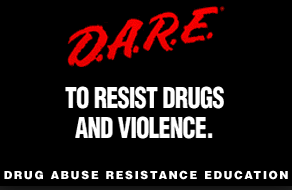Why Abstinence-Only Drug Education Doesn’t Work

Nov 14, 2017
If you attended public school any time between 1970 and the present, it’s almost impossible to not have been exposed to anti-drug campaigns. From the famous D.A.R.E. campaigns to Nancy Reagan’s “Just Say No!” PSAs, from truth.com ads to Red Ribbon Week, we’ve been pushing this as long as most American kids and adults can remember.
Despite this, teens still do drugs, and any administration that thinks their kids don’t is being incredibly ignorant. Those teens eventually turn into adults who also do drugs. Just to be clear, drugs are bad. They blow holes in your brain, can ruin your mind and body, and get you killed, just like all the PSAs told you. But are these abstinence-only drug programs as effective as people think?
When I was in fifth grade, a Disney program came to my elementary school to tell us about the dangers of drugs, and in 2011, it was pretty common knowledge that Disney stars weren’t exactly clean. Take Lindsey Lohan. The preteen Disney queen’s drug use was on TMZ just about every night. Should I have been watching TMZ when I was eleven? Probably not. But I remember that when I came home from that program, I ranted to my mom about the hypocrisy of it all. Disney, creator of teen drug addicts and destroyer of child stars’ lives, was telling us not to do drugs? I was 11, and I could already see through the charade of drug education. If a child can see through a program like it’s glass, the program clearly isn’t accomplishing its goal.
Most drug programs, with few exceptions, exclusively focus on illegal drugs, not minding that prescription drugs tend to be the real gateway drug. In 2010, Purdue Pharma’s OxyContin profits were at an all time high, raking in 3 billion dollars in that fiscal year. At that time, 3,000 people were hospitalized for heroin abuse. When the prescription drug crackdown made OxyContin harder to get, hospitalization due to heroin use raised to over 10,000 people in 2014, the highest than it’s been in over a decade. If OxyContin and other painkillers like it seem to be gateway drugs that can kill us, why don’t we learn about them?
Sophomore year health classes at Niles West and North make an effort to make their students realize that any opioid product is just as bad as the next, and no, OxyContin is not just a little stronger than Tylenol as it advertised; however, this needs to be nationwide. We need to be as detailed as possible and properly relay this message: just because prescription drugs are legal, it doesn’t make them any safer than illegal ones.
These programs also put a lot of pressure on the adult teaching the curriculum. Teachers, often concerned about maintaining proper professional distance or worried that being honest could threaten their employment, act as innocent as possible and often deny having any experience with drugs or alcohol. Although this approach might work in fifth grade, by the time high school arrives, it becomes hard to believe that every single health teacher has never touched alcohol. If abstinence-only sex education doesn’t work, why do people think that abstinence-only drug education works?
To be clear, abstinence only sex-ed doesn’t work, and in states where that’s the only mandatory sex ed, teen pregnancy rates are significantly higher than average, as are domestic abuse rates. It doesn’t keep kids from having sex, and it doesn’t teach them safe ways to engage in sexual behavior. It teaches girls that if they have sex before marriage, they’re like a worn out hair tie, and no one wants a worn out hair tie.
These metaphors instill in young girls that if they ever have sex, or if they are raped, they are used, worn out and no one will want them. This perpetuates the shame around rape victims, and the drug programs do the same thing to addicts.
Abstinence only drug education works similarly on teens. It often doesn’t keep them from doing drugs, and it doesn’t teach safety measures. Acting as if every person who has done drugs or has drank liquor in their lifetimes are horrible, bad decision makers, assists in creating a culture of shame around addiction. Only 5% of alcoholics willingly go to rehab, and most serious drug addicts simply die before admitting it to anyone.
This culture of shaming drug and alcohol use teaches children to shame those who suffer from the disease of addiction and cause those suffering to never come forward for fear of public ridicule.
This ridicule also keeps students from seeking help. They believe that if they tell their counselor that they’re addicted to drugs, (or alcohol) and want to quit, they’ll get punished. This sounds eerily similar to teens who don’t come forward about rape or assault, fearing they’ll be thought of as a slut or a “bad decision maker.”
They don’t want to be seen as a snitch if they tell someone about their friend with a drinking problem. Many teens die due to overdose since their friends don’t want to get in trouble if they call for an ambulance. These programs do nothing to help the students that already suffer from addiction; in most cases, it’s impossible for addicted person to “just say no.”
Even without the systematic teaching of shame, a majority of drug resistance courses contradict their stated purpose. Programs like D.A.R.E. have no long term affects on rural and urban students, while having a detrimental effect on suburban students. The linked study shows that drug use was actually greater in suburban schools AFTER they participated in D.A.R.E. than in suburban schools that didn’t participate in the program. These programs are designed to scare kids out of drug use, and was traditionally implemented in middle schools. By the time these students reached high school and college and are exposed to drugs, the short term positive affects of the program have worn off, if they ever existed in the first place. Even worse, this ineffective program cost taxpayers 1.3 billion dollars a year in its prime.
The main way we teach kids about drug use is fear based, from truth.com ads about your teeth falling out or you skin going gray, or the new thisfreelife.gov campaigns about premature wrinkles and cracked nails. These ads are marketed to minors age 12-18, but this market does not have a fully developed frontal lobe, or the part of the brain that understands long term consequences. Students aren’t afraid of memory loss if they smoke weed or disgusting teeth and lung cancer if they smoke cigarettes, because those are consequences developed over time and they do not appear to be real.
The other type of drug PSAs are pandering and try and connect with the teens, but instead alienate them by being overly condescending and seem to be written by 50-year old executives in a room that haven’t been on the internet since 2009. We know drugs are bad; we don’t need dated memes and old youtubers to tell us so.
These PSAs and campaigns need to understand the root cause of drug use in teens, and a good number of people are shocked to find out that peer pressure, wanting to be cool and being rebellious aren’t the main reasons. In reality, it’s often times stress, depression, and boredom that leads kids to experiment with drugs.
I know some straight A students who started smoking cigarettes freshman year as a coping mechanism. I know kids who smoke weed so they can feel something other than spiraling depression. Once the big organizations and health teachers realize these are the true reasons kids use and abuse drugs, they might be able to find other ways to alleviate the cause, and from that, be able to treat the symptom.
Just about any type of drug education is better than telling us to “Just Say No.” Better yet, teach about drugs the same way we should teach about sex: “You shouldn’t be doing this so young, but I know you do, so here are some ways to stay safe and people you can talk to.”



